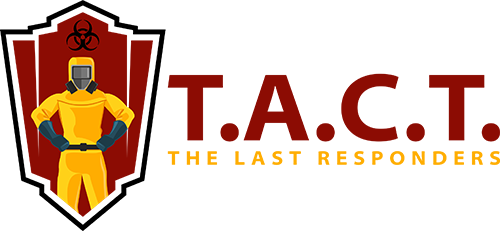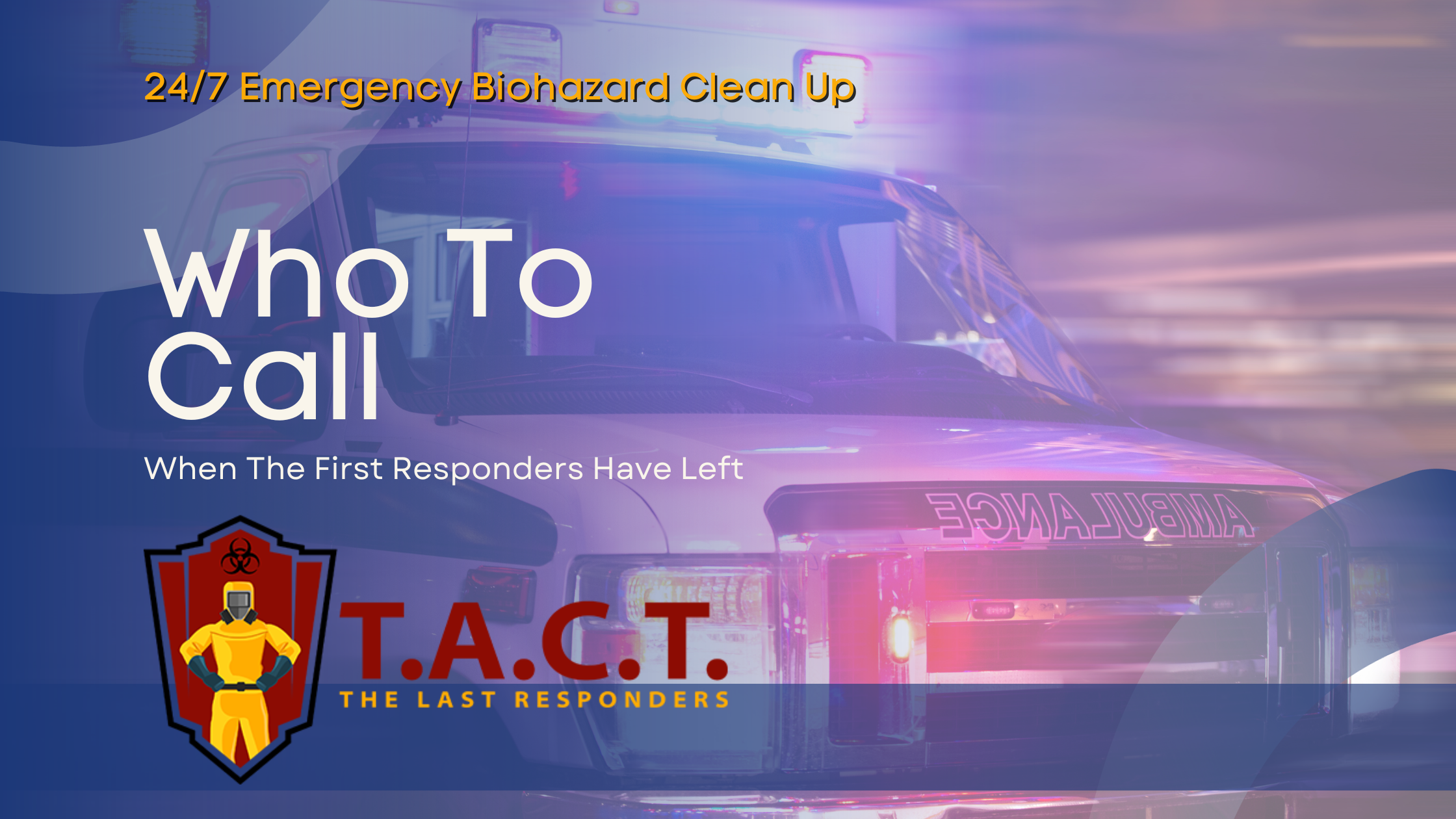mold inspection
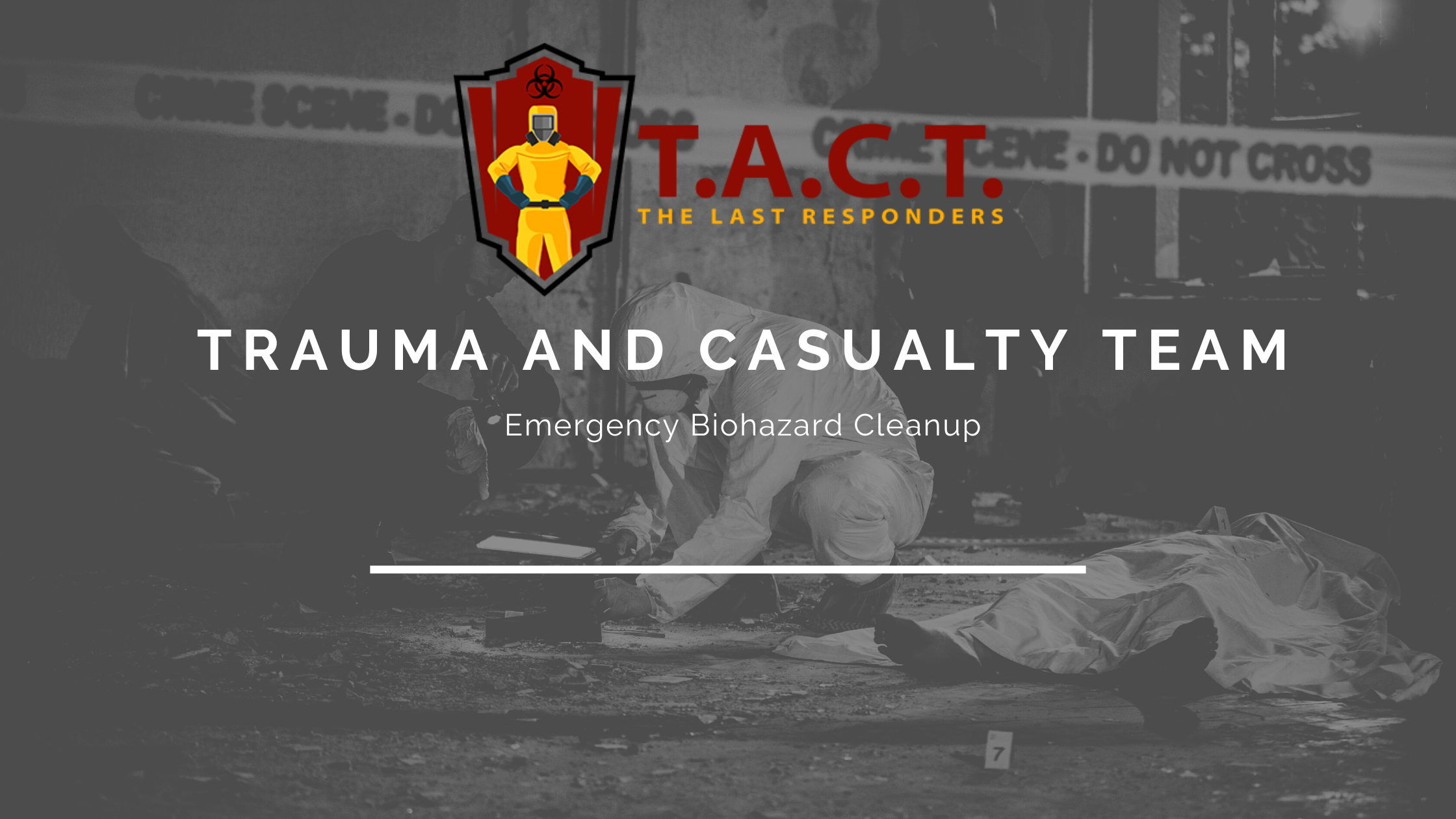
Essential Guide to Effective Mold Removal Inspection
Is a mold removal inspection necessary for your home? This guide explains how these inspections help identify mold and moisture problems and improve indoor air quality. Learn about the steps involved and the benefits for your health and property.
Key Takeaways
Mold inspections are crucial for effective remediation, identifying visible and hidden mold issues, and assessing moisture problems to prevent health risks.
The inspection process includes client history gathering, comprehensive visual assessments, and utilizing advanced detection tools like moisture meters and infrared cameras.
After remediation, a Post-Remediation Verification (PRV) assessment ensures successful mold removal and long-term prevention through regular inspections and moisture control strategies.
Importance of Mold Removal Inspection
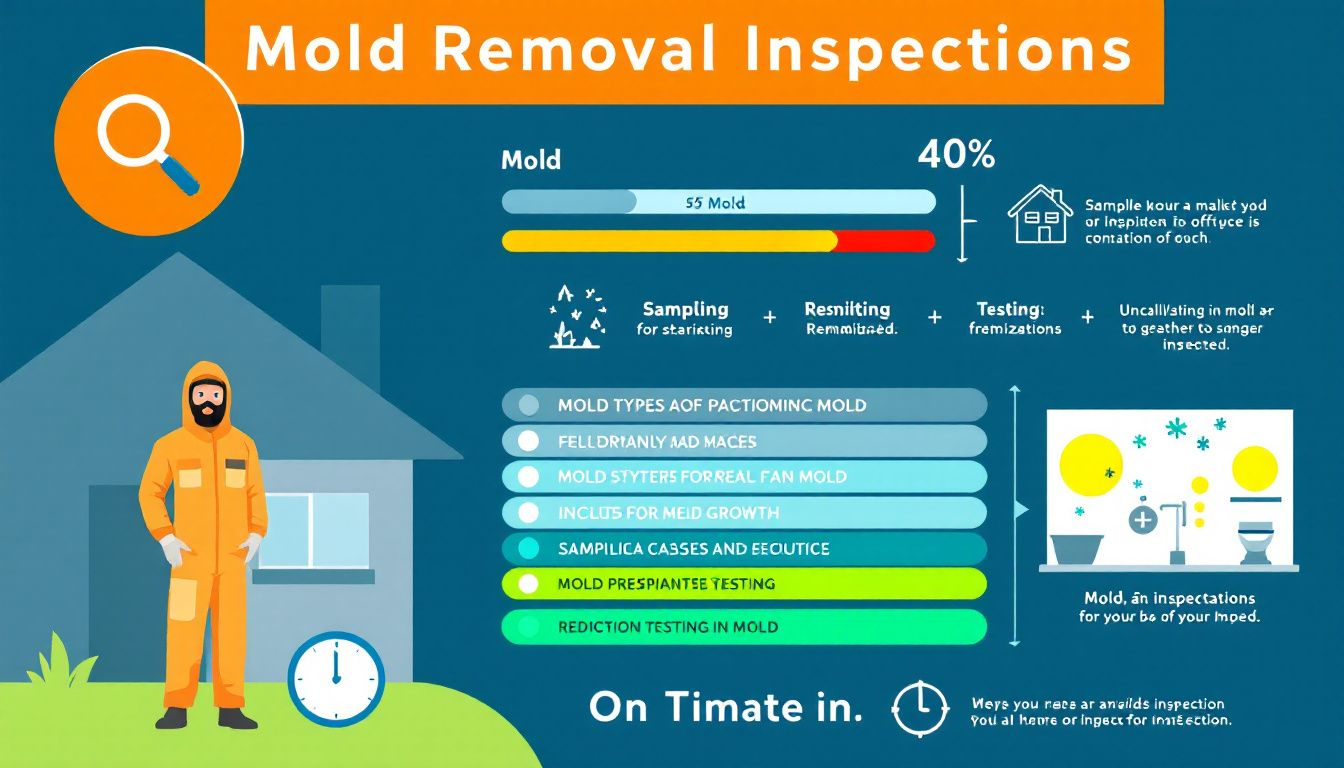
Mold inspections play a key role in effective mold remediation. They offer factual information to combat misinformation and address mold issues at their roots. The primary goal is to determine the need for remediation and its extent. Quick responses minimize damage and reduce repair costs.
The initial mold inspection is essential for identifying and addressing mold problems. It helps detect visible mold, hidden mold issues, and moisture problems, safeguarding health by minimizing exposure to allergens. A thorough inspection also assesses indoor air quality, identifying other allergens and contaminants.
Recognizing the importance of mold inspections lays the foundation for effective mold management. The following sections cover identifying visible mold growth, detecting hidden mold issues, and assessing moisture problems.
Identifying Visible Mold Growth
Visible mold growth is straightforward to identify. During inspections, visible signs are the primary focus. Inspectors document areas of concern for further investigation and remediation. A thorough assessment identifies water damage and moisture sources that support mold growth.
While an inspection may not be needed when visible mold is present, understanding the extent and source of the mold infestation is crucial. Inspectors should include HVAC systems and moisture-prone spots in their visual assessments.
Detecting Hidden Mold Issues
Hidden mold issues require sophisticated methods for detection. Inspectors use moisture meters and infrared cameras to uncover hidden mold growth. These tools are essential for effective detection within a property.
Advanced technologies help identify visible mold signs and hidden sources during inspections. This comprehensive understanding is crucial for effective remediation.
Assessing Moisture Problems
Excessive moisture is a primary catalyst for mold growth. Undiscovered moisture problems often lead to mold. Hence, assessing and addressing these issues is crucial during inspections.
Identifying and stopping the water source causing mold is crucial. Addressing these moisture issues prevents future mold growth and maintains a healthier indoor environment.
Steps in the Mold Removal Inspection Process
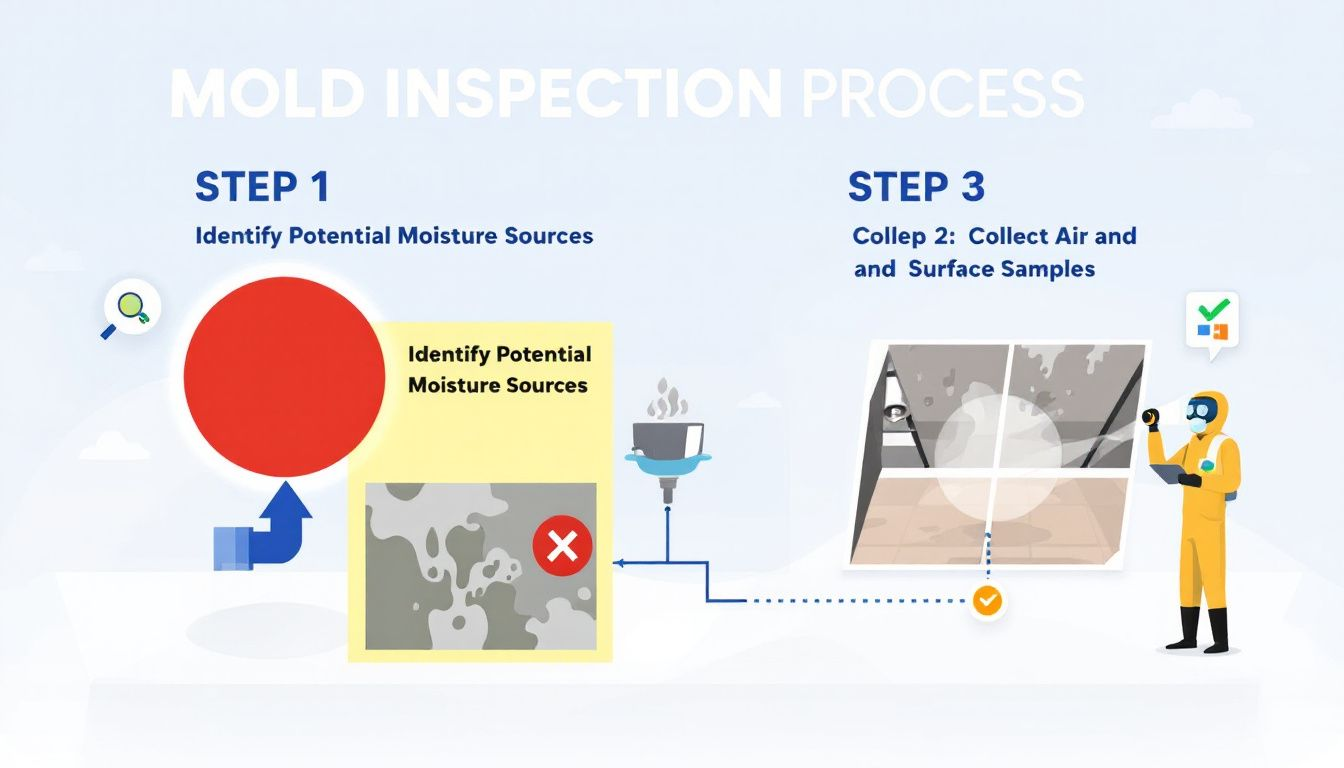
A thorough mold inspection involves several steps: a comprehensive inspection and a detailed report of findings. Expert mold removal services offer testing and treatment to identify and eliminate mold, gauging the extent of the issue.
Consider mold inspections even if visible mold is absent but there is a mold smell or suspected water issues, especially if mold present is a concern. A typical report includes a summary of findings, areas needing further testing or repair, and moisture control recommendations.
Let’s delve into the specific steps involved in the mold removal inspection process, starting with client consultation and history gathering, followed by a comprehensive visual inspection, and the use of advanced detection tools.
Client Consultation and History Gathering
Understanding the client’s history and symptoms helps pinpoint mold-affected areas. During consultations, inspectors explore symptoms and moisture history, providing critical clues for the inspection.
This step ensures that inspectors have a clear understanding of potential problem areas before beginning the visual inspection.
Comprehensive Visual Inspection
A comprehensive visual inspection covers areas like the interior, exterior, crawl spaces, HVAC system, attic, and other moisture-prone spots. Inspectors assess walls, ceilings, and structural elements for moisture indicators like condensation and water stains.
If an inspector finds an area of concern, they should document it and recommend further testing if needed. This thorough inspection ensures no potential mold issues are overlooked.
Use of Advanced Detection Tools
Identifying moisture sources is crucial since mold growth is linked to water damage. Professionals use moisture detection technologies to address hidden water issues. Common tools include moisture meters and infrared cameras.
Moisture meters are helpful for detecting hidden mold growth. Endoscopic cameras explore hard-to-reach areas. These advanced tools ensure thorough inspections and accurate identification of all mold issues.
The Role of Mold Testing in Inspections
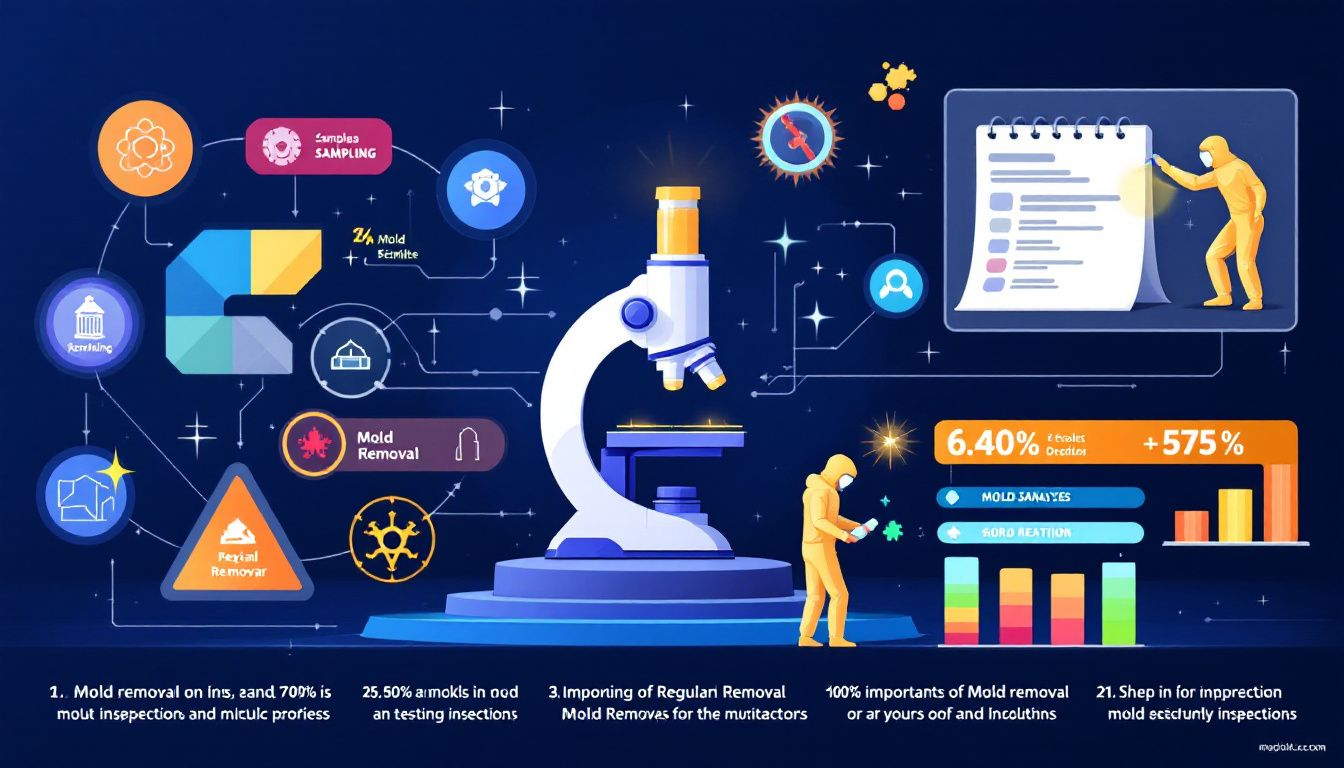
Mold testing is a key part of the mold inspection and testing process, involving sample collection for lab analysis. Its purpose is to accurately identify and quantify mold presence, especially when there are visible signs of mold or health concerns. A mold test can help in this identification process.
Mold testing confirms the presence and levels of mold, informing remediation strategies. While unnecessary for visible mold, it’s essential for comprehensive inspections where hidden mold might be present. Professionals with specific experience should conduct the testing.
Next, we will explore air and surface sampling techniques, followed by the laboratory analysis of mold samples.
Air and Surface Sampling Techniques
Various methods determine the presence and levels of mold during testing. Indoor air quality assessments collect air samples for mold and other contaminants using an air pump with a specialized sampling device.
Surface sampling involves taking a sample from a suspected mold area for lab analysis. Post-remediation inspections include visual checks for remaining mold and collecting air and surface samples to evaluate spore levels.
Laboratory Analysis of Mold Samples
Laboratory analysis identifies mold species and concentration levels, informing the remediation process. Common methods include culturing, microscopy, and molecular techniques like PCR.
This detailed analysis offers insights into potential health risks and helps professionals develop targeted remediation strategies.
Developing a Mold Remediation Plan
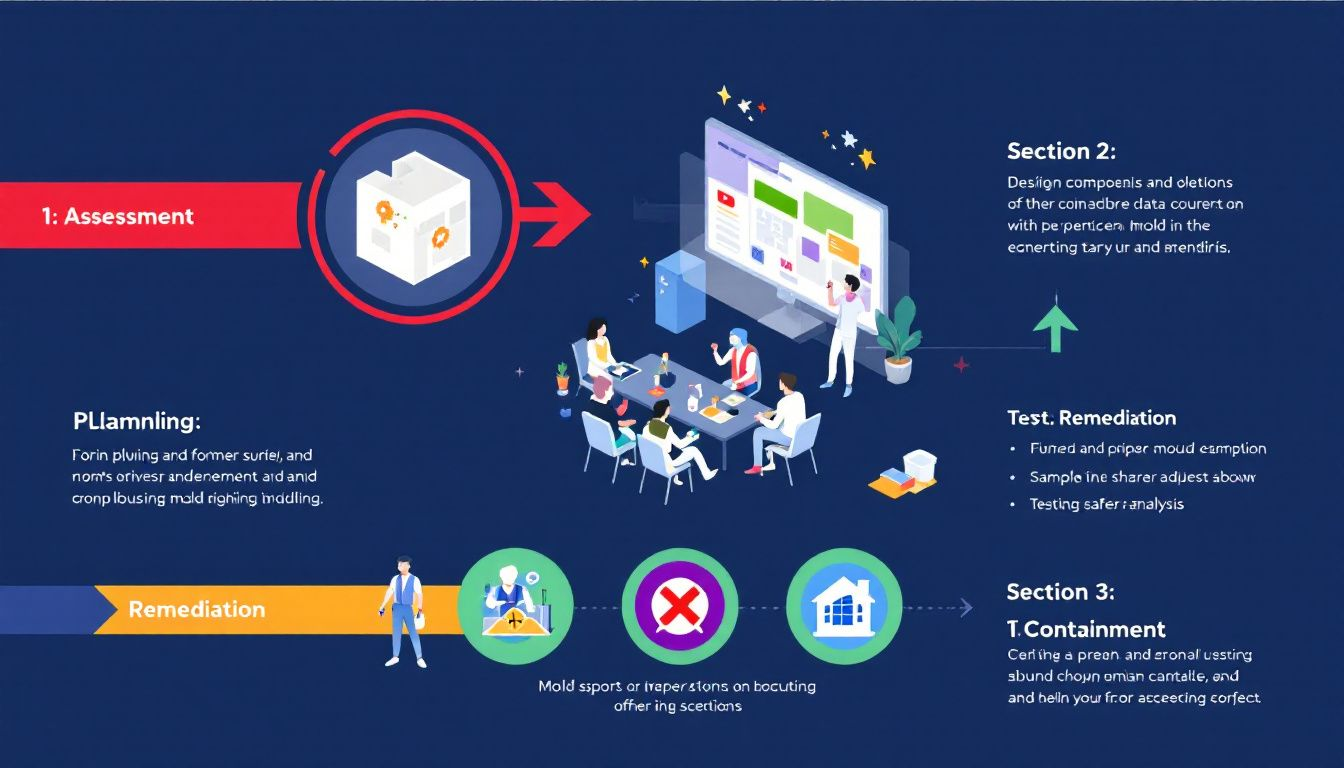
A mold remediation plan is shaped by assessing the mold’s extent and underlying moisture causes. A customized plan addresses specific problems effectively, informed by inspection results and includes a comprehensive report, lab analysis, and strategies.
A treatment plan effectively addresses mold issues. The process involves antimicrobial application, source identification, containment, air filtration, removal and cleanup, and replacement. Complete removal of contaminated materials often ensures successful remediation.
Let’s dive into interpreting inspection results and creating a detailed remediation strategy.
Interpreting Inspection Results
Mold inspection results guide professionals in determining necessary remediation steps. Interpreting test results is essential for assessing the severity of the issue and planning appropriate remediation.
Professionals analyze data to identify necessary moisture control measures, ensuring the remediation plan addresses root causes and prevents future issues.
Creating a Detailed Remediation Strategy
An effective remediation strategy includes containment, removal of contaminated materials, and measures to prevent future mold growth. Moisture testing after remediation ensures all materials are sufficiently dried.
Regular monitoring, moisture control, and proper ventilation are essential to prevent future mold growth. A mold prevention strategy helps mitigate future mold risks.
Implementing the Mold Removal Process
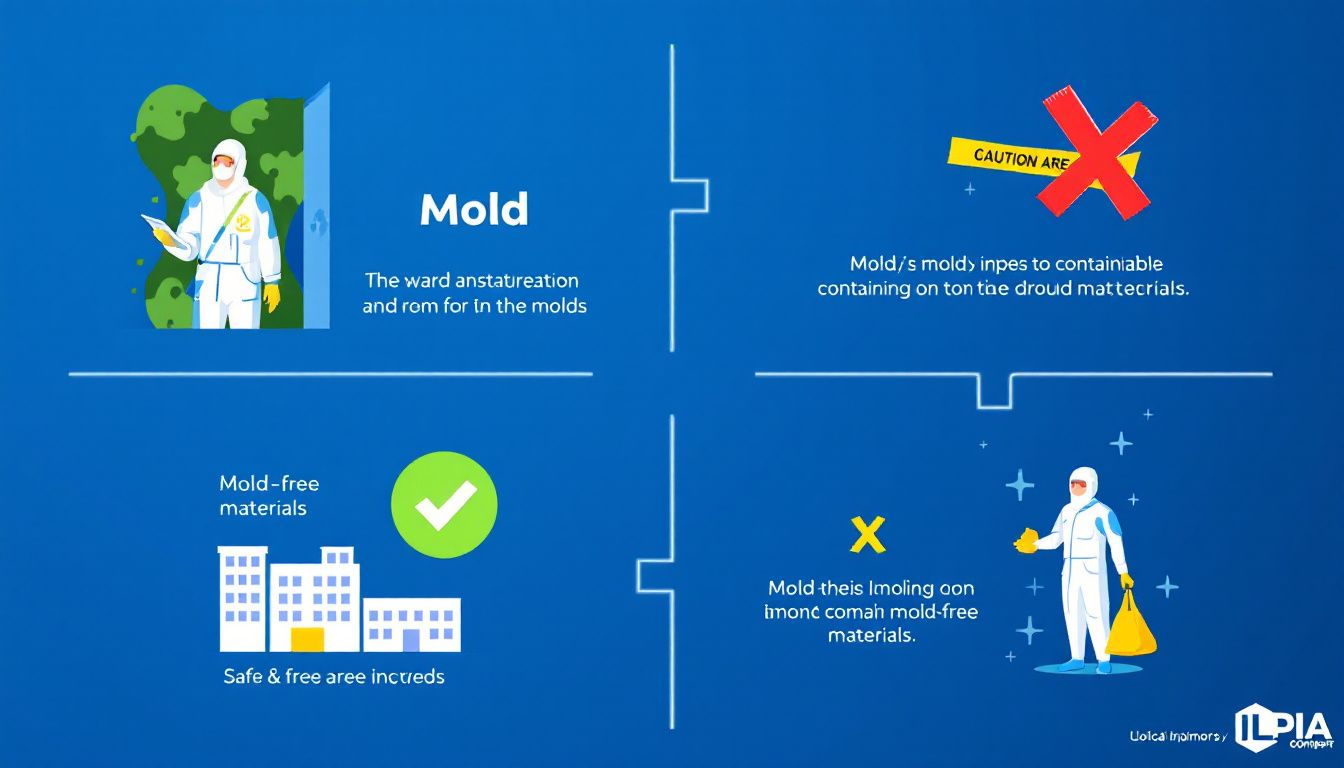
The mold removal process begins after inspection and testing for a mold problem. Mold cleanup and restoration start with contacting a service provider or specialist. Catalytic enzymes used in remediation eliminate mold spores and break down allergenic protein structures.
The goal of the remediation process is cleanup, repair, and remediation with minimal disruption. This includes containment procedures, safe removal of mold-infested materials, and final cleaning and disinfection.
Containment Procedures
Containment procedures prevent the spread and cross-contamination of mold spores. Common methods include using negative air machines and physical barriers to limit exposure during removal.
Restricting access to mold-affected areas is vital to prevent exposure and further spread of spores. These measures ensure the remediation process is safe and effective.
Safe Removal of Mold-Infested Materials
An effective remediation strategy includes protective measures to limit mold exposure during cleanup. Safe removal of contaminated materials is essential for effective remediation and preventing health risks. Sealing off affected spaces prevents spore contamination.
Careful removal of contaminated materials minimizes the spread of mold spores, ensuring all infested materials are handled appropriately and the risk of mold contamination is minimized.
Final Cleaning and Disinfection
Thorough final cleaning and disinfection eliminate all mold spores, ensuring a safe environment. Precise procedures for removing contaminated materials prevent further spread and protect indoor air quality.
Post-remediation verification confirms the effectiveness of mold remediation and ensures all spores are removed. This final step guarantees a mold-free environment safe for occupants.
Post-Remediation Verification
A Post-Remediation Verification (PRV) Assessment confirms the effectiveness of remediation and ensures minimized health risks. This verification is critical to ensure successful mold removal and a safe environment.
Verifying remediation success ensures the treatment has effectively eliminated mold and hazards. A PRV assessment checks the success by evaluating the cleanliness and safety of the area.
For effective post-remediation verification, conducting post-remediation inspections and ensuring long-term mold prevention are necessary steps.
Conducting Post-Remediation Inspections
Laboratory analysis of mold samples offers insights into potential health risks. Air scrubbers and HEPA vacuums are essential for capturing mold spores from the air during remediation.
Air scrubbers with HEPA filters capture airborne mold spores during cleaning. Post-removal reports include detailed findings, including before and after levels.
Ensuring Long-Term Mold Prevention
Developing a mold prevention plan helps homeowners maintain a mold-free environment. Post-remediation, implementing strategies to prevent future mold growth is essential.
Regular inspections, moisture level monitoring, and prompt leak repairs are vital for mold prevention. Key components include proper ventilation, humidity control, and ongoing maintenance.
Choosing the Right Mold Inspection Services
Choosing the right mold inspection service ensures accurate assessments and effective remediation. Verify that the company holds certifications from reputable organizations like the American Indoor Air Quality Council, carries Errors and Omissions insurance, and has a good BBB rating. Qualified services provide accurate and reliable results.
Next, we will discuss the qualifications of professional mold inspectors and the questions to ask potential inspectors.
Qualifications of Professional Mold Inspectors
Mold inspectors should possess relevant certifications from recognized organizations to ensure their expertise. Inquire whether the inspector’s lab is accredited by the American Industrial Hygiene Association. Ask for professional references and samples of previous inspection reports to assess the inspector’s qualifications.
Selecting a qualified mold inspector involves checking their certifications, lab accreditation, and professional references.
Questions to Ask Potential Inspectors
Choosing the right mold inspection service is crucial for ensuring accurate assessments and effective mold remediation. A qualified mold inspector should have relevant certifications, training, and experience in mold inspection and remediation.
When interviewing potential inspectors, ask about their experience, certifications, and the procedures they follow during inspections. This will help ensure that you hire a competent professional who can provide reliable mold inspection and remediation services.
Summary
In summary, effective mold removal inspection is essential for identifying, testing, and eradicating mold from your home. By understanding the importance of mold inspections, the steps involved in the process, and the critical role of mold testing, you can develop a comprehensive remediation plan. Implementing the mold removal process and ensuring post-remediation verification are crucial for maintaining a mold-free environment.
Choosing the right mold inspection services and ensuring long-term mold prevention strategies will help safeguard your home and health. Armed with this knowledge, you can confidently address mold issues and create a safe, healthy living space for you and your loved ones.
Frequently Asked Questions
Why is mold inspection important?
Mold inspection is essential for identifying both visible and hidden mold issues, determining the need for remediation, and preventing health risks associated with mold exposure. Addressing these concerns promptly can significantly safeguard your wellbeing.
How can I identify visible mold growth?
To identify visible mold growth, look for signs of water damage and moisture, especially in areas prone to dampness like HVAC systems. If you observe any discoloration or fuzzy patches, it’s essential to address the issue promptly.
What tools are used to detect hidden mold?
To effectively detect hidden mold, inspectors utilize moisture meters and infrared cameras, which help identify areas where mold may be present. These specialized tools are crucial for thorough mold assessment.
What is the role of mold testing in inspections?
Mold testing is essential for identifying the presence and concentration of mold in a home, aiding in determining appropriate remediation measures. It is particularly important when visible mold or health issues are present.
What should I look for when choosing a mold inspection service?
When choosing a mold inspection service, prioritize companies with reputable certifications, Errors and Omissions insurance, and positive BBB ratings. Additionally, inquire about the inspector's experience and the specific procedures they employ during inspections to ensure their qualifications.
Latest news
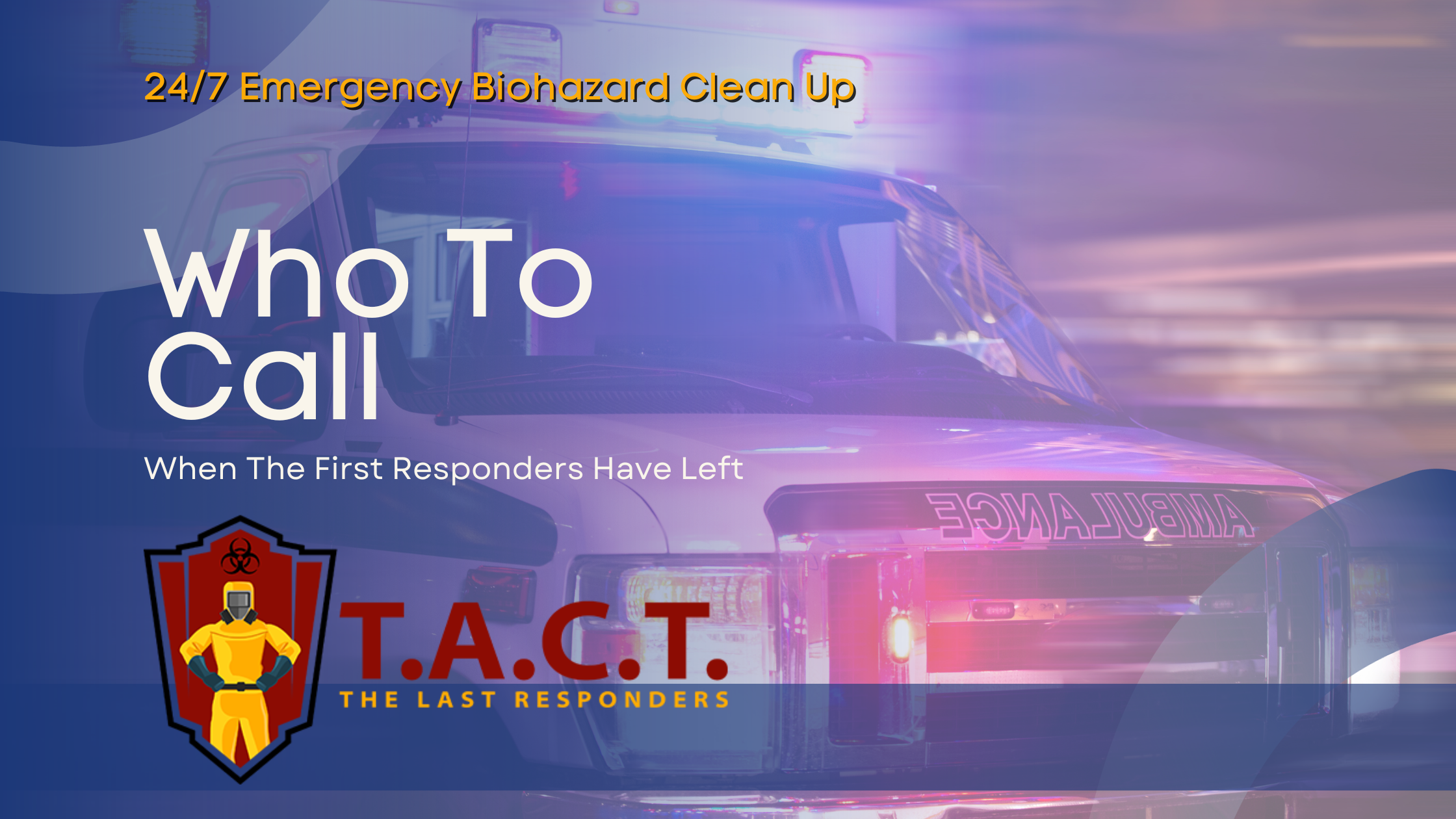
Bio Cleaning Services
Read More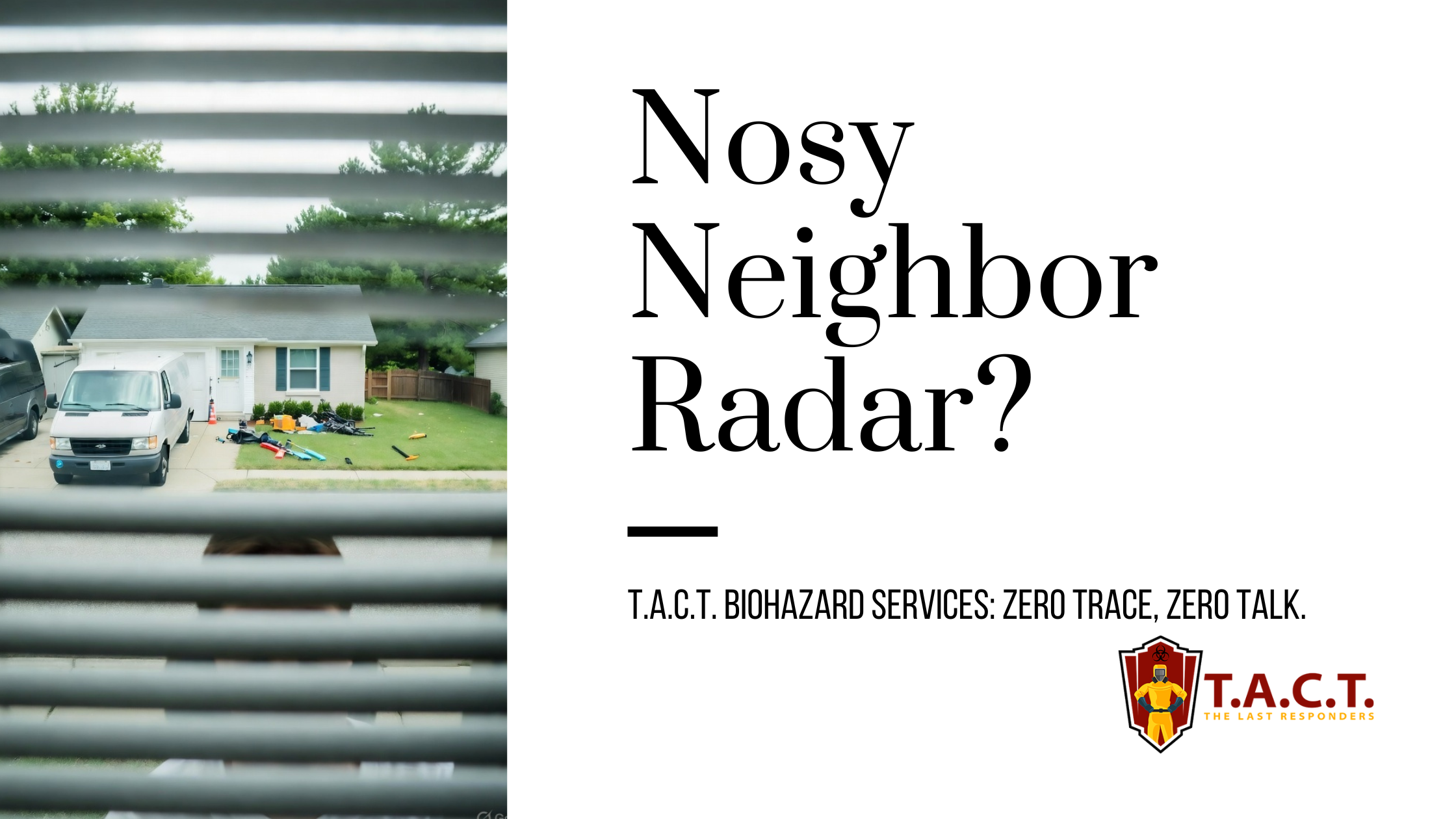
Nosy neighbors peeking? T.A.C.T. North Atlanta offers discreet biohazard remediation for rodent infestations, mold, hoarding, and more. Unmarked vehicles, quiet experts, full privacy—24/7 service at 470-781-4775.
Read More